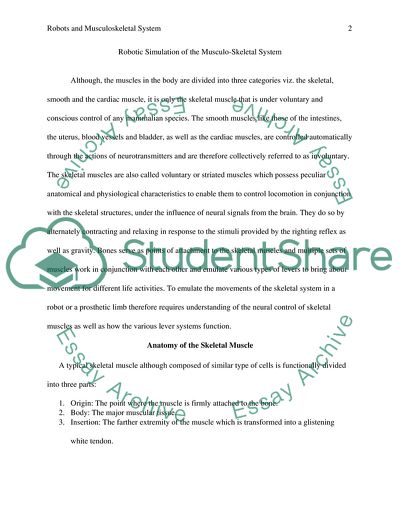Cite this document
(Robotic Simulation of the Musculo-Skeletal System Research Paper, n.d.)
Robotic Simulation of the Musculo-Skeletal System Research Paper. https://studentshare.org/technology/1747378-robotsystems-on-the-skeletal-and-muscular-system
Robotic Simulation of the Musculo-Skeletal System Research Paper. https://studentshare.org/technology/1747378-robotsystems-on-the-skeletal-and-muscular-system
(Robotic Simulation of the Musculo-Skeletal System Research Paper)
Robotic Simulation of the Musculo-Skeletal System Research Paper. https://studentshare.org/technology/1747378-robotsystems-on-the-skeletal-and-muscular-system.
Robotic Simulation of the Musculo-Skeletal System Research Paper. https://studentshare.org/technology/1747378-robotsystems-on-the-skeletal-and-muscular-system.
“Robotic Simulation of the Musculo-Skeletal System Research Paper”. https://studentshare.org/technology/1747378-robotsystems-on-the-skeletal-and-muscular-system.


